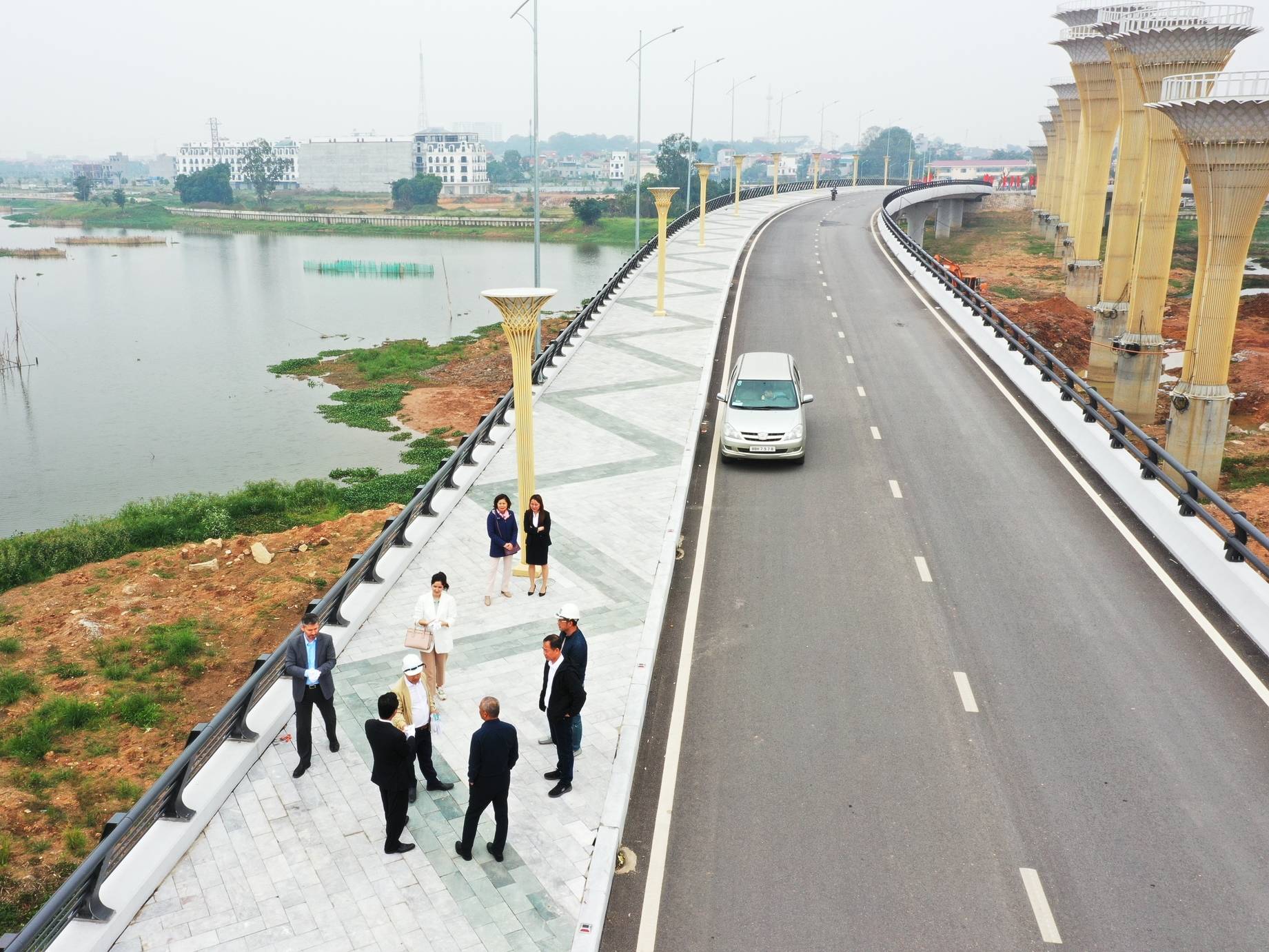We use Cookies. Read our Terms
- News
- In the Field: Building a Bridge to Asia
In the Field: Building a Bridge to Asia

Photo: PMU/Dam Vac Bridge Project
The OPEC Fund is stepping up its engagement in Southeast Asia, a dynamic region of huge potential, yet also significant development gaps. The most recent example is the newly opened Dam Vac bridge, which crosses a lake north of the capital Hanoi and significantly improves connectivity in the entire region. With the provision of US$21.8 million, the OPEC Fund contributed 85 percent of the US$25.5 million total project cost.
The Vietnamese authorities extended an invitation to the OPEC Fund for the first mission to the country since the start of the COVID-19 pandemic and this provided a welcome opportunity for Jaafar Al-Mahdi, Director for Public Sector Operations in Asia & the Pacific, to re-engage with local partners on the ground. Participating in the opening ceremony in December he said: “This bridge is a milestone in the development of Viet Nam’s infrastructure. More than 100,000 people are expected to benefit from better and faster travel connections.”
In addition, the project will also benefit the environment. Sarah Bougara from the Young Professional Development Program, who accompanied Mr. Al-Mahdi, explains: “The initial scope of Dam Vac bridge project is complete. The remaining fund savings will be used to construct a road linking the lakeside road to the Dam Vac bridge and to dredge the lake’s bed, which will help reduce flooding and enhance the surrounding environment.”
The 295-meter reinforced concrete arch bridge connects the urban regions in the north with the rural regions in the south of Vinh Yen City, the economic and cultural center of Vinh Phuc province. Due to its strategic location the authorities attach great attention to the development of the mountainous region. Industry, agriculture and tourism form the backbone of the local economy, which in the period 2000- 2013 registered average growth of 17.2 percent, according to official data. These spectacular rates were a mix of pent-up demand and the authorities’ successful effort to attract foreign direct investment.
The OPEC Fund signed its first project in Viet Nam in 1978 when it provided US$7 million to a fisheries development program. Over the years, the engagement grew to the current total of 21 loans for more than US$280 million across all sectors. Additionally, trade financing has become more and more important due to Viet Nam’s growing economic role as an international trading hub.
“Viet Nam is one of the most dynamic economies that we know,” Mr. Al-Mahdi said. “However, moving from rapid growth to sustainable development is a long-term effort where institutions such as the OPEC Fund still have an important contribution to make.”
The close relationship was also demonstrated by the fact that the delegation was invited to meetings at the Ministry of Finance and to visit another OPEC Fund-supported project, the Central Transport Hospital in Hanoi. The hospital received a loan from the Fund in 2010 for the acquisition of high-tech equipment, including an MRI machine, emergency, surgical and maternity wards with over 200 beds. The hospital provides quality care for over 700 patients daily, and an additional 80 patients per day in emergency care.
The growing role of the OPEC Fund in Southeast Asia was also reflected in the first invitation to attend the 25th Ministerial Conference of the Greater Mekong Subregion (GMS) in Luang Prabang, Lao PDR, as an observer. Country Manager Driss Belamine represented the institution and reported: “The event was a golden opportunity to meet with colleagues from our partner countries and peer development banks.”
The GMS is a natural economic area bound together by the Mekong River, covering 2.6 million km2 and a combined population of around 326 million, excluding China. It is formed by Cambodia, the People’s Republic of China, Lao PDR, Myanmar, Thailand and Viet Nam.
With a vision to develop a more integrated, prosperous, sustainable and inclusive subregion, the GMS Economic Cooperation Program supports the implementation of high-priority subregional projects in priority sectors. Significant progress was achieved in the implementation of the previous GMS Regional Investment Framework 2022, which at the end of its term had 63 percent of the 205 projects completed or commenced and US$59 billion, or 76 percent, of the total required funding secured. The 25th Ministerial Conference saw the endorsement of the new GMS Regional Investment Framework 2023–2025.
The Asian Development Bank (ADB) is supporting the further integration with a focus on upgrading production and exports, transforming cities into engines of growth and improving the quality of road infrastructure and connectivity. The OPEC Fund – often partnering with the ADB – to date has committed more than US$1.1 billion to the countries of the region in the transport, education, agriculture, health and energy sectors.